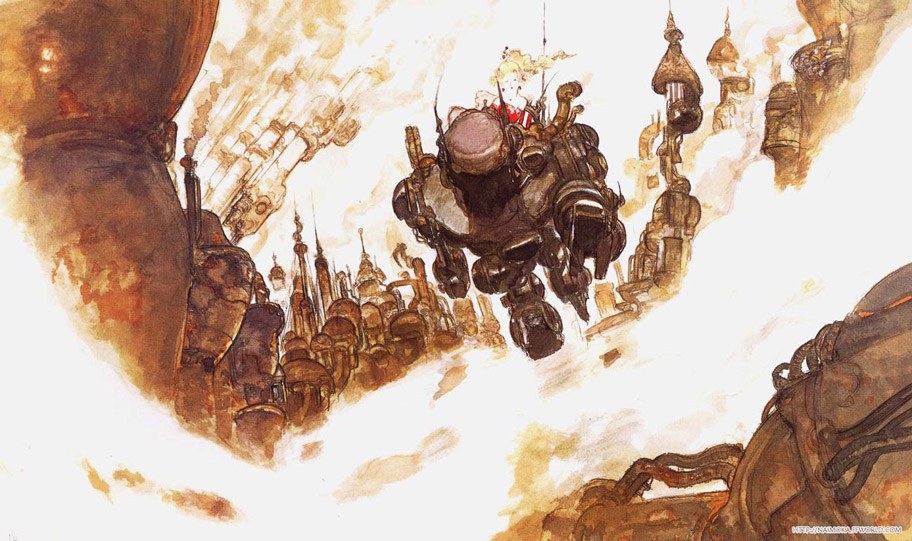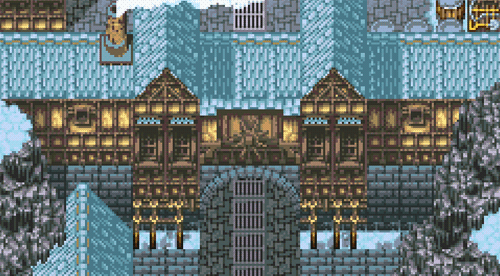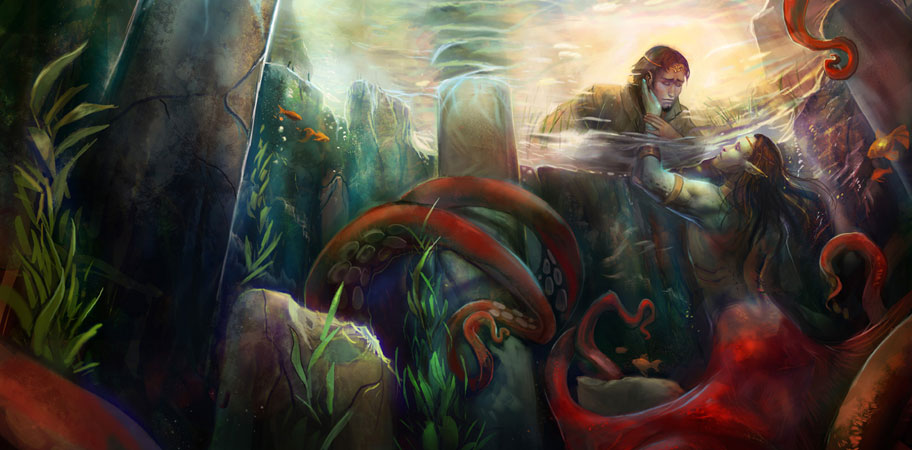
Artist Jen Zee is best known for her role as Art Director at Super Giant Games, where she’s “responsible for the lush hand-painted 2D artwork that defines the distinctive look of our gameworld and all its colorful denizens.” She helped to design the iconic look for Bastion, a popular 2011 action RPG. Her work will also be seen in Transistor, a spiritual follow-up to Bastion, which releases on May 20th for PC and PS4. Read More »

I still remember the first time that I saw a Japanese Roleplaying Game (JRPG). Like many people of my generation, it was a Final Fantasy game, though not one so obvious as Final Fantasy, Final Fantasy VI (or Final Fantasy 3, if you’re familiar with the North American naming scheme), or Final Fantasy VII. No, it was Final Fantasy Legend II in all of its monochromatic glory on the Nintendo Game Boy.
I was at a friend’s house, and his cousin was also visiting. I’d never met the cousin, but he had a Game Boy (like me), so I liked him almost instantly. But, where I was eradicating (or, more accurately, being eradicated by) the Footclan in Teenage Mutant Ninja Turtles, or dodging winged-Moai statues in Super Mario Land, he had this slow, boardgame-like game, with numbers, equipment, a map, and so many other elements that I was unfamiliar with. In particular, I remember a fight with a tiger. The one pictured here, in fact. As I think back on it, I can only assume that it’s a low level enemy, fought in one of the early game environments. At the time, however, it was something different. Something frightening.
If you do your homework, however, you’ll quickly discover that my first experience with Final Fantasy was, in fact, not with Final Fantasy at all, but with Akitoshi Kawazu’s infamous SaGa series. See, when Square the developer of the Final Fantasy series, wanted to bring over Kawazu’s zany Makai Toushi SaGa, the first in the SaGa series, to North American shores, they decided that it made more sense to release the title under a respected and successful brand, Final Fantasy, rather than attempting to sell something new. It was the right decision. Final Fantasy Legend II became Square’s first million-selling product. Read More »

Explore a beautiful, vast and ruined world riddled with unknown dangers and lost technologies. Inspired by nightmares and dreams alike.
Every so often, a project, whether it’s a book, a film, a videogame, or whatever, crosses my path and I can’t help but stop to stare. The first time I laid eyes on Hyper Light Drifter‘s protagonist, a nameless Drifter, lounging beside a pixel-perfect fire pit, I fell in love. When I read a description of the game’s ambitions, I knew it was true love. Hyper Light Drifter is a “2D Action RPG in the vein of the best 8-bit and 16-bit classics, with modernized mechanics and designs on a much grander scale.”
“Miyazaki films have taught me that beautiful animation and design add life to a world,” described Hyper Light Drifter Lead Designer, Alex Preston in the game’s Kickstarter campaign. “From characters to background elements, everything is lovingly crafted while I hum show-tunes and squint suspiciously at the flickering pixels until they perform as intended.
“I want it all to be as beautiful as possible, forging color with the dark and eerie wastes and intimidating landscapes.”
Read More »
Images via Gysahl Greens Tumblr
Yesterday, Final Fantasy VI (affectionately, and confusingly known as Final Fantasy 3 when it was first released in North America) turn 20 years old. The series changed significantly in the years that followed, so it’s fun to look back at this classic game and remember the impact it had on an entire generation of gamers.
Here’s a little bit of trivia: Scott Lynch named Locke Lamora, protagonist of his popular Gentleman Bastards series, after Locke Cole, one of the central characters in Final Fantasy VI!
What is your favourite memory from Final Fantasy VI?
I would see queer romance in a different, more nuanced light, complete with a historical perspective that both undercut Card’s work and crystallized the notion of real-world men who loved each other with their bodies as well as their minds.
Hello A Dribble of Ink! I am David Edison, author of The Waking Engine and editor of GayGamer.net, and I am dribbling my ink all over you. Aidan has asked me to talk about my experiences with inclusivity in the gaming world, which is a great chance to look at the differences and similarities with the equivalent challenge in the world of speculative fiction. I’ll apologize in advance for being unscholarly and scatterbrained: these are, of course, sprawling and complex dynamics, and a genuine analysis is beyond both the scope of a blog post and the capabilities of yours truly.
Let’s start with the idea of finding yourself reflected in the creative works you consume. From my personal experience: I encountered a representation of my own queerness in speculative fiction well before I encountered it anywhere else in our culture, especially games. Orson Scott Card’s Songmaster hit me like a ton of bricks at nine, maybe ten years of age. (There is irony to be found there, of course, which is its own post, methinks.) The pedophilia went right over my young head (paging Alanis Morissette and her 10,000 not-actually-ironic spoons, and yet another blog post), but what mattered to me then, as now, was the love. Only a few years later, when I read Mary Renault’s stunning historical novels like Fire from Heaven, The Mask of Apollo, and The Persian Boy, I would see queer romance in a different, more nuanced light, complete with a historical perspective that both undercut Card’s work and crystallized the notion of real-world men who loved each other with their bodies as well as their minds.
For a young queer man, especially a reader, discovering multiple sources of my own nature (which I had realized at a much younger age than 9 years old, though I did not have the words for it) was a lifeline: suddenly I was a part of the world. Moreover, I could decide between different representations of myself and begin building an identity in concert with reality, rather than wondering if perhaps, to my horror, I might be the only one. Read More »









